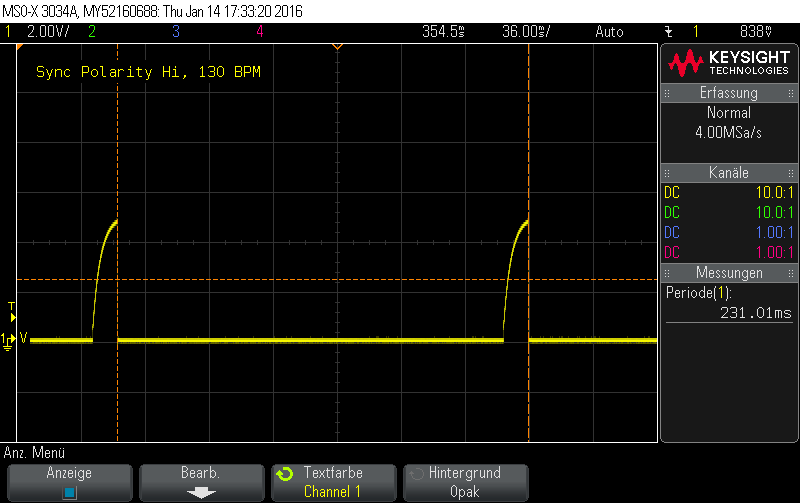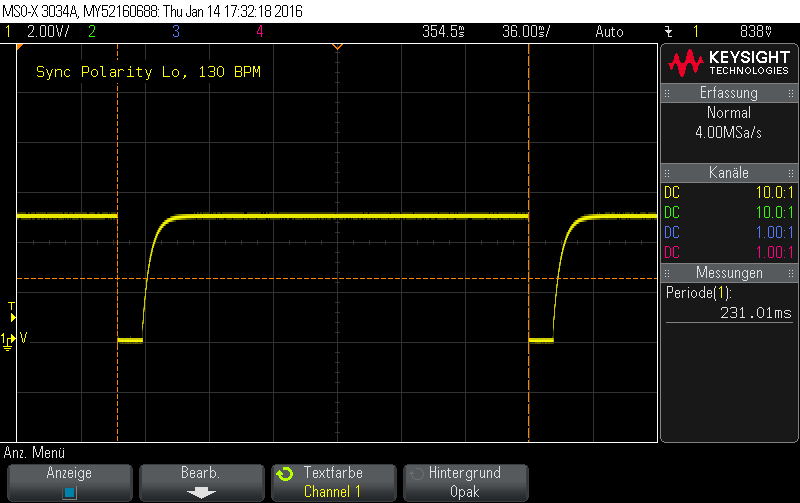The Korg Sync Protocol
How to sync Volcas, POs and other gear
Mono or Stereo
You don't need a stereo cable for the sync. You can use one, it doesn't hurt, but mono is enough. I did the following tests to confirm this:
- I looked at the signal on the RING during transmission with an oscilloscope. There is a small crosstalk from the TIP, showing the edge of the clock signal.
- I extrapolate this information from the PO-Series, which can give out the sync signal on one channel of the TRS-Connector and the audio signal on another channel.
- I tried it with a mono cable and it worked.
However, RING and SLEEVE are not connected. There is no continuity if you measure it with a voltmeter.
The Amplitude
On the Volca Series I have measured an output amplitude of the pulse of 5V. The manual states:
SYNC OUT: a 5 V pulse of 15 ms is sent at the beginning of each step
On the PO-Series the output amplitude is 1V. The manual states, that a voltage up to 5V is accepted as input.
The Polarity
On the Volcas there is an option to reverse the polarity of the pulses. The default is Rising Edge.

The alternate is Falling Edge.

This is independently adjustable for input and output sync. You can access the "menu" by switching on the Volca while holding the FUNC-button. With the step 3 and step 4 buttons you can select the polarity. Confirm your selection with the RECORD-Button or cancel with the FUNC-Button
| LED off | LED on | |
|---|---|---|
| Step 3: Sync Out Polarity | Rising Edge | Falling Edge |
| Step 4: Sync In Polarity | Rising Edge | Falling Edge |
It is the same option at least on the FM and the Sample. I guess the other Volcas use Button 3 and 4 as well.
On the Volca Mix you have to hold the PLAY-Button while powering on the device. Then use the TEMPO-Button to access either the parameter SoL or SoH. Then navigate using TEMPO to SAV to Save or CAn to Cancel your selection. The Volca Mix has only an output, so there is no input adjustable.
| Rising Edge | SoH |
| Falling Edge | SoL |
The Timing
The Volcas can sync to and generate two timing modes.
